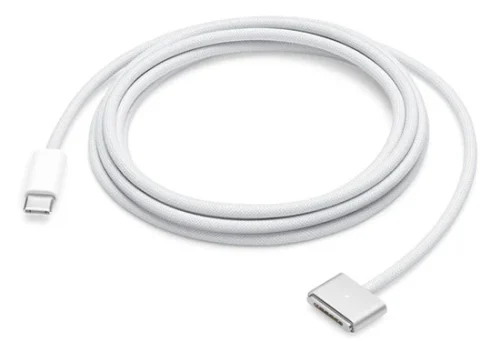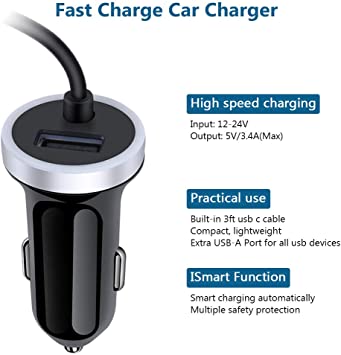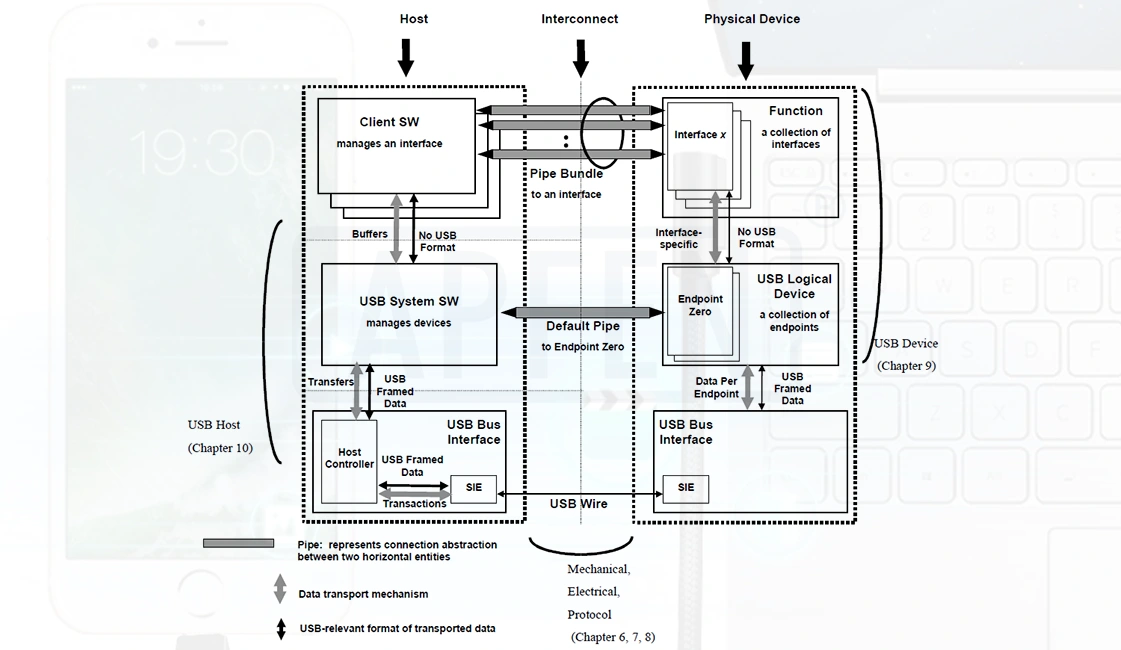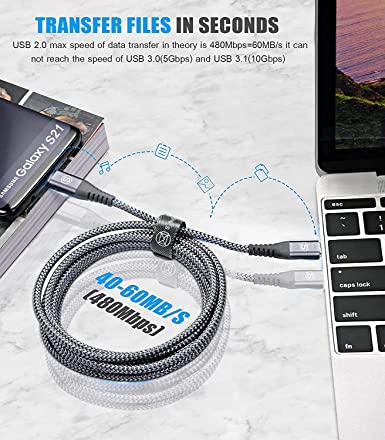
Picture this: You’re sitting at your desk, engrossed in a project, and suddenly you trip over your laptop’s charging cable. In an instant, your laptop dropped to the floor, giving you a sinking feeling in your stomach. This unfortunate situation was all too common for MacBook users, until Apple introduced a revolutionary solution – MagSafe cable.
MagSafe is a magnetic power connector first introduced by Apple in 2006 as a standard feature on the MacBook Pro line. This innovative technology provides a secure connection between the power adapter and laptop while also preventing potential accidents due to tripping over the charging cord. The launch of apple MagSafe marks a major milestone in laptop charging, and its history is an interesting story to explore.
In this blog post, we’ll take a deeper dive into the evolution of MagSafe, comparing the original MagSafe to its successors, MagSafe 2 and usb-c to magsafe 3 cable. We’ll also discuss the reasons behind Apple’s decision to re-launch MagSafe 3. So, let’s begin a journey: take the time to uncover the fascinating story behind the development of MagSafe charger.
MagSafe's development history: MagSafe to MagSafe 2 and MagSafe 3.
MagSafe 1 cable
MagSafe 1 charger debuted on the 2006 MacBook Pro with its magnetic attachment and easy detachment. The first MagSafe port has a square design with five holes that connects to the included port using a magnetic connection. The idea is that if the connector is pulled, it will detach quickly and smoothly without damaging the MagSafe connector or ripping the MacBook Pro off the table or desk. Since its release, it has been an instant hit with MacBook users.
Initially, Apple used a T-shaped design that pulled the wires directly out of the machine, and MagSafe charging port later transitioned to an L-shaped design that placed the wires on the side of the computer. The T-shaped design was used from 2006 to 2009, while the L-shaped design was used from 2010 to 2012.
However, as technology advanced and laptops became thinner and lighter, Apple faced a challenge – how to adapt the sleek design of new devices while maintaining the convenience and security of MagSafe. About a decade later, USB-C gradually replaced Apple’s MagSafe. USB-C cables certainly have their advantages, but MacBook Pro owners have never forgotten about MagSafe.
MagSafe 2 cable
Miniaturization led Apple to launch MagSafe 2 in 2012. MagSafe 2 uses a thinner T-shaped connector, allowing Apple to create a slimmer MacBook. The new design fit the thinner Mac computers Apple released that year. While some users prefer the smaller form factor, the Apple MagSafe2 connector is not compatible with the original MagSafe connector and requires an adapter.
Apple brought back the T-shaped design with the MagSafe2 cable and stuck with it throughout the Apple MagSafe’s lifecycle.
MagSafe deactivation
In 2016, as Apple did a major redesign of the MacBook models, making the body thinner. Apple is starting to retire MagSafe. MacBook Pro models released from 2016 to 2020 do not use MagSafe technology, but instead charge via their configured USB C ports. The last machine with MagSafe charger, the 2017 MacBook Air, was discontinued by Apple in July 2019.
MagSafe 3 cable
Fast forward to October 2021, and Apple released updated 14-inch and 16-inch MacBook Pro models equipped with USB C to magsafe 3 cable. This latest version brings back the magnetic connection people love while addressing concerns users have raised over the years. With MagSafe 3 charger, Apple aimed to strike a balance between compatibility, convenience, and security to ensure MacBook users can enjoy a reliable charging experience without compromising on design.
Magsafe 3 VS Magsafe 2
Magsafe 2 and usb c to magsafe 3 cable are both types of connectors used to charge Apple laptops. So, what’s the difference between apple Magsafe 2 vs 3?
- Shape: Magsafe 3 charging port connectors are smaller and have a slightly different shape than Magsafe 2 connectors, which are smaller and more rounded.
- MagSafe 3: 18.81mm long, 13.18mm thick, 4.48mm high vs MagSafe 2: 17.16mm long, 5.36mm thick, 13.01mm high.
- Connection port: The MagSafe 3 charging cable adopts a split design, and the output end is a MagSafe 3 connector with 5 spring contacts. The input end is a USB-C connector, which is not integrated with the charger. Once the data cable is damaged, only the cable needs to be replaced, which effectively reduces costs and facilitates use and maintenance. The sheath material of the cable is braided from nylon to make it more durable. The MagSafe 2 cable is built into the charger, which means if it becomes damaged the entire charger and cable will need to be replaced.
- Carrying power: The biggest highlight is that the MagSafe 3 charging cable supports PD 3.1, which can carry a power of up to 140w. The charging power of the MacBook Pro 16 M1 Max is about 136.68W. Magsafe 2 is capable of delivering 85 watts of power. It can be seen that MagSafe 3 can provide stronger power transmission than MagSafe 2.
- Construction differences: In the past MagSafe 1 and 2, the cable and power adapter were connected in one piece. This means that if the cable breaks, the entire cable and charging head need to be replaced. And the MagSafe 3 benefits from USB Type-C, which means the cable and power adapter can be detached. This enables consumers to charge their Macbook using a USB C power adapter that supports device PD power.
Why relaunch MagSafe 3?
So why is Apple bringing back MagSafe in its third iteration? With the launch of the latest 14-inch and 16-inch MacBook Pro laptops, they are loved by Apple fans for many reasons including their gorgeous screens and amazing performance. Apple is also using this to bring MagSafe back to the Mac.
Since 2016 to 2021, people’s simple and safe magnetic attraction function of usb c to magsafe 3 is lost. Apple fans have been clamoring for the return of MagSafe. In recent years, the USB C port has become a global standard, almost unifying the connection ports of most mobile electronic devices. The return of MagSafe is Apple’s commitment to the changing needs of MacBook users and to delivering the best possible user experience. MagSafe has been able to keep pace with USB C in terms of charging efficiency. Click to learn which port types are used on MacBook Pro and what to note when charging your MacBook.
One of the main reasons for the relaunch was the need for a more versatile and flexible charging solution. Apple usb-c to magsafe 3 cable is rumored to feature a modular design, allowing users to customize their own charging experience by attaching various accessories to the magnetic connector. This opens up a world of possibilities, from wireless charging pads to external displays, making the MacBook even more versatile and useful.
Additionally, MagSafe 3 is expected to address user concerns about the durability of previous MagSafe connectors. While magnetic connections are undoubtedly convenient, some users have reported issues with frayed cables and damaged connectors over time. Apple has taken these concerns to heart and is rumored to have made significant improvements to the overall build quality of the MagSafe 3 to ensure a more powerful and reliable charging experience.
Is Magsafe 3 and 2 compatible with each other?
Unfortunately, the MagSafe 3 cannot be used with the MagSafe 2 due to differences in the thinner, wider profile design. Not only are the sizes different, but their functions are also different. MagSafe 3 charger reaches a higher voltage of 140W, while apple MagSafe 1 and 2 max out at 60W and 85W respectively. Therefore, MagSafe 3 only works with dedicated devices such as the latest MacBook Pro from 2021 onwards, and it is not directly compatible with older MacBooks. Forcing it to charge an older model MacBook will cause varying degrees of damage to the battery.
You may be wondering if there are adapters that would make them compatible? Adapters are indeed a good idea many times provided by the cable manufacturer. Apple has previously used the same technology to make MagSafe 2 cables work with original MagSafe devices. But so far, Apple experts say there are huge differences between MagSafe 3 and 2, making the idea of switching very difficult. MagSafe 3 and 2-compatible technology may not necessarily be released in the future. Therefore, we still recommend that you select the corresponding equipment and cables according to your needs when purchasing.
Which one is better, MagSafe or USB-C?
- Charging efficiency: When it comes to charging in the past, using a MagSafe charger has had advantages over a USB-C cable. Charging via a Thunderbolt 4 port via a USB-C cable won’t be as fast as MagSafe 140W charging. However, with the update to version 3.1 of PD fast charging, the USB C cable and the included power adapter can support up to 240W, so the charging speed through the Type C connector port is faster than MagSafe. Please note: Not all USB C supports 240W fast charging, depending on the charging protocol version and production process of the cable.
- Convenience: But in terms of market application, USB-C cables are better. Imagine that when you travel, you will bring mobile phones, cameras, game consoles, laptops and other electronic devices. You can’t bring a charging cable for every device, which will increase your burden. USB C can save you, it can always adapt to most electronic devices. You just need to take it with you to charge different devices and transfer data.
- Safety: If you use Apple devices at home or in the office, there is no doubt that MagSafe 3 cable is better. Thanks to its magnetic connection, you don’t have to worry about tripping over the cord and causing your MacBook to fall off your desk.
MagSafe’s history is a testament to Apple’s commitment to innovation and user-centered design. From its beginnings in 2006 to the introduction of MagSafe 3, Apple has continued to push the boundaries of laptop charging technology to provide users with a seamless, hassle-free experience.
MagSafe not only revolutionizes the way MacBooks are charged, it also embodies Apple’s commitment to creating products that improve our daily lives. Will other MacBook products return to magnetic interfaces and HDMI in the future? let us wait and see. We believe Apple will continue to surprise and delight us with its relentless pursuit of excellence.
In the above content, we provide a comprehensive and in-depth exploration of the key differences and innovations between Magsafe 3 and Magsafe 2. In the process, we demonstrate our expertise and deep understanding of technology.
As APPHONE, we are proud to provide one-stop customized manufacturing solutions, focusing on meeting the specific needs of B2B customers. We strictly implement quality control measures to create excellent cable and charger products for you, covering Apple cables, USB Type C data cables, earphones, adapters, wall chargers, car chargers and other series.
You can trust our experience and commitment to deliver your custom requirements to us. Our team will transform your ideas into high-quality, innovative practical products with high professionalism and exquisite skills. Whether you are looking for a highly individual solution or have the highest demands on product performance and reliability, we will wholeheartedly provide you with excellent service.
Contact us today and let’s start working together and pave the way to success together. Because at APPHONE, we not only focus on products, but also focus on creating value for you.
Can MagSafe 3 transmit data?
It’s a shame though that MagSafe for Mac has gone through two iterations. MagSafe 3 has only become thinner and lighter, and the charging power is greater. In addition to the magnetic charging feature, currently MagSafe 3 does not support other things, for example: it cannot transfer data like USB C.
Does MagSafe 3 work with older MacBooks?
No, the new MagSafe charger is not directly compatible with older MacBooks that don’t have a MagSafe connector. And the new MagSafe technology and its connector interface, reintroduced in 2021, are only compatible with MacBook Pro models of the same year and later. Older MacBook models use MagSafe 1 or MagSafe 2 connectors, which are not directly compatible with the new MagSafe chargers.
How compatible are MagSafe chargers?
MagSafe charger compatibility varies by MacBook model. Because different MacBook models support different powers, and the MagSafe connector shape is constantly being updated. Be sure to check the MagSafe charger’s compatibility with your specific MacBook model before use.

















